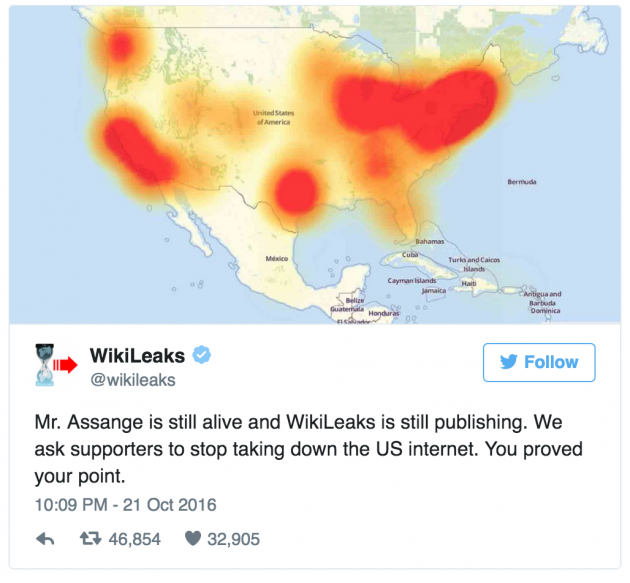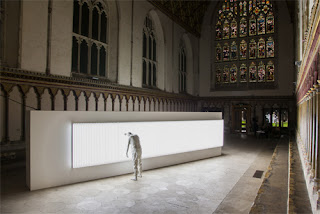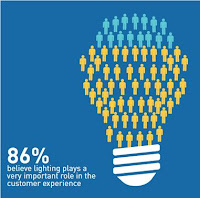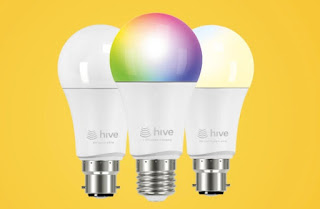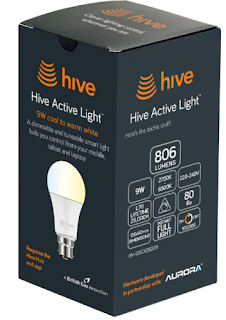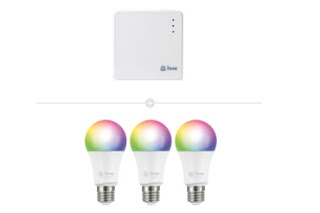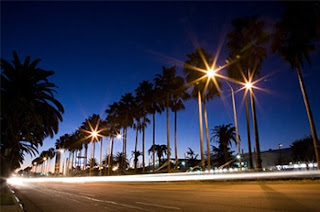CAT | LED
New lighting to change view of Niagara Falls. PLUS: Cambridge University buys circadian lamps to wake sleepy students. AND: Can LED boost health benefits of cannabis? Lux Today November 8 2016.
circadian lamps · led and cannabis · led lighting · lux today · niagra falls lighting · Novel Energy Lighting
Hackers harnessing Internet of Things (IoT) devices, including smart lights, have crashed some of the world’s biggest websites including Spotify, PayPal and Twitter.
It is no secret, as revenues from LEDs fade, that the lighting industry is placing a big pile of gambling chips on the success of the Internet of Things, but the hack marks the second major security breach in as many months, suggesting IoT is not yet ready for the big leagues.
A handful of the world’s top websites were targeted during the attack, including The New York Times, CNN and Amazon, making this the most high profile attack to date and one aimed at disrupting the very fabric of the internet in the United States.
The attack was carried by hijacking thousands of IoT devices, which had previously been infected with malicious code allowing attackers to take control of them. The attackers were then able to perform a denial of service (DDoS) by getting the enslaved devices to flood the chosen websites with messages, causing them to crash.
While a claim of responsibility is yet to be made for the attacks, it has been claimed on Twitter that WikiLeaks were responsible.
A tweet issued by WikiLeaks after the DDoS attack on some of the world’s leading websites.
Earlier in the month American internet provider OVH was targeted in an attack that involved the manipulation of 150,000 IoT devices.
‘Companies are simply not doing enough to improve IoT security and there is a lack of awareness and a certain laziness in their attitude towards the issue,’ Ken Munro of ethical hacking firm Penetration testing and security services, which identifies weaknesses in internet security, told Lux.
‘Companies are simply not doing enough to improve IoT security and there is a lack of awareness and a certain laziness in their attitude towards the issue.’
The IoT powered onslaughts are worsening because of the release of the Mirai botnet source code into the public domain. The code contains the necessary information needed to hack into IoT devices and ultilise them for use in DDoS attacks.
Security experts are worried that IoT devices are being built upon outdated operating systems using code that has not been properly tested for security loopholes, which hackers will exploit. The devices are then being rushed to market.
Munro believes that IoT manufacturers need to act now to prevent much more serious security breeches in the future.
‘Governments are becoming more and more concerned about the security risks that IoT poses, and the UK, US and EU governments are even considering legislation to compel firms to act,’ Munroe concluded.
The US Congress, for example, is currently mulling installing some kind of consumer protection into law to protect IoT consumer’s privacy, although talks are still at a very early stage, calls to act though are likely to speed up after this latest attack.
ddos · internet of things · iot · iot security · led lighting · Novel Energy Lighting
The annual event, which is taking place at the Chaper House in Canterbury Cathedral, is one of the most important cultural and contemporary art events to be held in the South East of England.
The exhibition by international artist Bernardi Roig, working with the University of Creative Arts (Canterbury), uses life size sculptures made from polyester resin leaning against a wall and covered in 200 of Thorn’s PopPack 58W Battens. The stark white of the sculpture, combined with the powerful illumination from the fluorescent lamps, creates a dramatic contrast within the surrounding Gothic stained glass window space. Roig’s work explores themes such as human isolation, loneliness, the limits of knowledge and the body’s deterioration. The artist has created a tense relationship between figure and background, between rational comprehension and spiritual understanding, between artificial light and divine clarity.
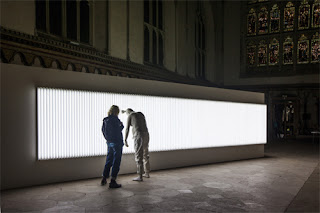 Emma Braso, Cultural Programme Curator at University for the Creative Arts, commented “We are delighted that Thorn has supported this event, the fluorescent lighting is a perfect choice of illumination for this exhibition as it creates a dramatic impact”.
Emma Braso, Cultural Programme Curator at University for the Creative Arts, commented “We are delighted that Thorn has supported this event, the fluorescent lighting is a perfect choice of illumination for this exhibition as it creates a dramatic impact”.
Thorn’s PopPack Batten incorporates a Tridonic PC T8 Pro ballast contained in a white stoved enamel outer to provide a colour rendering index of 80 and luminaire efficacy of 90 lm/w. The 1500mm luminaire is suitable for a wide range of applications, including unique exhibition displays such as the Sleepless Light Exercises.
church led · church lighting · led ligthting · led tubes · Novel Energy Lighting · poppack led · thorn led · thorn lighting · thorn poppack
iot · led lighting · lighting iot · Novel Energy Lighting · smart lighting · vatican lighting
1
Increased Dimming Compatibility With New Megaman GU10 Range
Comments off · Posted by admin in LED, LED downlights, LED GU10, LED Spots
Megaman, a leading LED lighting solution provider, is proud to announce the launch of a new selection of GU10 lamps that incorporate the company’s new Hybrid Reflector and U-DIM™ technology.
A new 4W (250lm) GU10 and 5W (360lm) dimming GU10, with 25,000 hours’ life, are now available in Megaman’s popular Economy range, whilst the Professional range sees the addition of a new 5.5W (500lm) and 7W (550lm) dimming GU10, both with 50,000 hours life.
All of the new dimming GU10’s incorporate Megaman’s revolutionary U-DIM™ technology as standard – making the lamps compatible with a wider possible range of existing dimmers, whether they are leading-edge or trailing-edge.
The new 7W addition to the Professional Range also features Megaman’s new Hybrid Reflector, providing excellent optics, high efficiency and precise beam control.
Megaman’s Economy range comes with 2 years warranty and the Professional range with 3 years as standard, extendable to 5 years through the website.
Buy Megaman GU10s from our website: www.novelenergylighting.com, or call us to discuss volume requirements: 0208-540-8287, email: sales@novelenergylighting.com
LED downlights · led GU10 · LED lamps · led spot · megaman 5.5w gu10 · megaman 5w gu10 · megaman 7w gu10 · megaman gu10 · Megaman LED · Megaman LED GU10 · u-dim
EU pledges millions to tackle IoT security threat. PLUS: Reykjavik turns off street lights for better aurora view. AND: US speedway becomes first to go all LED. Lux Today October 18 2016
iot · iot security · led stadium lighting · led street lights · Novel Energy Lighting · smart led lighting · smart lighting
25
Megaman Survey Shows Lighting Is Big Business For Hospitality Sector
Comments off · Posted by admin in LED, LED GU10, LED MR16 lamps, LED Spots
86% of hospitality professionals believe lighting plays a very important role in the customer experience. The findings of the survey, sponsored by Megaman, reveal that lighting is big business in the hospitality sector:
- only 1% of those surveyed think lighting is of no importance in the customer experience.
The findings show that good lighting encourages guests to stay longer and come back for more:
- 72% have left a venue earlier than planned because it was too brightly- or poorly-lit
- 74% have stayed longer than planned because the lighting made them feel relaxed and welcome.
Respondents thought a well-lit venue is:
- “somewhere that draws you in” (36% of respondents)
- “somewhere to spend time” (34%)
- “somewhere to go back to” (26%)
- none of the above (4%).
The survey revealed that respondents thought that upfront lighting refurbishment costs are less important than ambience. When making decisions on new lighting in a venue, hospitality professionals say that key considerations are:
- the effect and ambience of the new lighting (67%)
- the ability of staff to dim the lights (43%)
- energy bill/CO2 savings (31%)
- the upfront costs (23%).
Overall, 43% of those surveyed have been involved in a lighting refurbishment in their present or previous venue and said:
- the new lighting had been well received by customers – 84% of customers gave positive feedback on the lighting refurbishment
- good lighting boosts business – 91% think the lighting refurbishment had a positive impact on business in terms of an uplift in sales or profits
- education is still needed about the benefits of LEDs.
Only half of all hospitality professionals (49%) think a halogen lamp ban next year would be a positive change for them, while 36% say it would not affect them at all and 15% think that a ban will have a negative impact on them.
Fred Bass, managing director of Neonlite International, the brand owner of Megaman, said: “This survey supports what we are seeing in our day-to-day business within the hospitality sector – good quality lighting is appreciated and a well-lit scheme attracts customers who stay longer and spend more.
“However, the one area where I think we are at the cusp of a tipping point is in the understanding of the benefits of LEDs amongst the majority of those in the hospitality sector. Although half of those surveyed say that they think the banning of halogen lights and introduction of LED equivalents would be positive, there is still another half who are unsure.
“As more and more bars, restaurants and hotels experience the benefits of the latest in LED lighting technology, I believe we will see a dramatic sea-change in favour of LEDs.”
hopsitality led · hospitality lighting · led ambient lighting · LED downlights · led gu10s · LED lamps · LED spots · Megaman LED · Novel Energy Lighting
British Gas, the UK power utility that is blazing smart home trails with its Hive connected heating system, is now staking a claim to the residential smart lighting market by adding LED lamps to the system, a move that could signal the arrival of other major utilities into the home smart lighting arena.
Through a partnership with LED company Aurora Group, British Gas in June began offering intelligent Hive-branded LED bulbs that tie into the Hive home internet hub, allowing users to wirelessly turn lights on and off and brighten and dim them from anywhere via an app. Last week, it beefed up the offering with bulbs that will change colours and colour temperature.
The LED lamps, supplied by Aurora, are the latest addition to the ever-expanding Hive ecosystem. British Gas – the largest power utility in Britain – launched Hive Active Heating in July 2015 to allow customers to control heating and hot water from computers and gadgets either at home or from around the world. Early this year it added ‘smart plug’ and ‘smart sensor’ products; the plug lets nervous users switch off an outlet if they fear they’ve left the iron on, and the sensors send alerts if they detect motion through a door or window.
Lighting – called Hive Active Light – now fits neatly into the same scheme. Traveling users can, for example, schedule lights to switch on and change brightness as a burglar deterrent. Or they can do the same for their own mood and comfort when they’re at home. A new Hive bulb from Aurora now lets users change colours. Another lets customers tune the colour temperature of white light, in line with the emerging field of ‘circadian lighting’ in which blue-tinged white light can help stimulate people, and red-tinged white light can foster relaxation.
The new products follow on the heels of Hive allowing users to control the Aurora lights with verbal commands using Amazon’s Echo hardware and Alexa software. Hive also works with the ‘if this then that’ tool from service company IFTTT, which lets users program lights to trigger or respond to other things. Clearly, Hive has move beyond its heating roots.
‘Although we started out by launching our smart thermostat, we are more than a central heating business,’ Hive product and commercial director Tom Guy told Lux. ‘For some, the benefits of smart lighting will be about the peace of mind that, while you’re away on business or holiday, you’ve scheduled your lights to come on. For others, it will be about setting the perfect ambience to unwind after a stressful day. For these reasons, smart lighting has the ability to transform people’s experience of the space they live in.’
Guy added that Hive will continue to add functions, and to innovate ways for users to engage with the system. For instance, users can express vocal requests to Amazon’s Alexa in about 80 different phrases germane to the UK , including ‘Alexa, bosh my lights on,’ Guy said.
Internet of Things
It’s all part of the fledging Internet of Things (IoT) in which anything that can be digitised will be for the purposes of improving controls and operations, and of gathering and analysing data.
It is also key to the general beyond illumination movement that is driving the lighting industry in the modern era in which LED lamps are expected to
last for a couple of decades and thus deprive vendors of revenue from replacement sales, long their financial bread-and-butter in the days of traditional incandescent lighting.
Although many LED lighting vendors are touting smart lighting, the concept has been slow to catch on in the home, where it has had something of a limited, upmarket niche appeal. One reason is that in many instances users have to purchase expensive starter kits.
Still, smart home lighting appears poised for a breakthrough. In a recent survey, consulting giant Deloitte said that 40 percent of consumers identified lights as an appliance they would most likely replace with a connected device – tying for the lead with thermostats, which also weighed in at 40 percent. Next came security cameras, at 33 percent, followed by security alarms and fridges, at 30 percent each.
And in its recent annual ‘socket survey,’ Sylvania reported that 76 percent of people agree that ‘smart lighting will eventually replace regular lighting.’
Aurora believes that associating with a utility like British Gas, which has direct access to over 14 million homes in the UK, will help kick-start consumers into deploying Internet-connected lighting.
At your service
The partnership also moves Aurora into the realm of a service industry, which is where many modern lighting companies are trying to position themselves in the face of waning replacement hardware sales.
‘They’ve got 10,000 engineers on the road, so in terms of how they engage with their customers, its’ very, very direct,’ said Neil Salt, managing director of Aurora’s IoT division. ‘We’ve always been excited about what the opportunities would be beyond the bulb and the opportunity came along with Hive. They have real opportunity in terms of their scale and the reach into residential. You can’t ignore they’re a significant player in that space. With men on the ground it makes a significant difference in how the adoption curve will be because you have the face-to-face interaction with people.’
The ‘men on the ground’ aren’t selling Hive Active Light per se. But as service and support engineers who install the smart Hive thermostat, they put a human face to the system, and can help warm up users to the notion of adding smart products such as LED lamps. Customers can purchase the Hive-branded, Aurora-supplied bulbs through the Hive website or from a number of UK retailers including John Lewis, Curry’s, Amazon, Maplin and Screwfix. One original, dimmable bulb costs £19, a set of three costs £49, and five costs £79. The bulbs are rated at 806 lumens, nine watts, 25,000 hours and 2700K. Users control them via Apple or Android devices. Signals travel via ZigBee wireless connections.
The new nine-watt ‘cool-to-warm’ colour temperature bulb is priced at £29, £79 and £119 for one, three or five. The bulbs can range from a warm 2700K to a cool 6500K (in the counterintuitive numbers of the Kelvin scale, higher is cooler). Prices for the 9.5-watt full RGB colour bulb are £44, £119 and £179 for quantities of one, three or five.
Hive makes the bulbs available with either of the UK’s standard socket fitting – ‘screw’ or ‘bayonet.’ The bulbs do not require a Hive Active Heating system, but they do require a hub.
The hub is a small square device that looks like a broadband modem. Hive sells a starter kit including one hub and three bulbs for £89, £119 and £159 for the dimmable white, cool-to-warm, and colour bulbs, respectively.
Existing Hive Active Heating users can tie bulbs into their hubs. New users who want heating, lighting and the other Hive products including smart plugs and sensors can buy kits starting at £299 for a hub and heating, one bulb, an indoor motion sensor and either a door or window sensors; £349 includes an extra lamp plus a smart plug.
Customer retention
Although the Hive deal helps cast Aurora as more of a services company, Aurora’s revenues will come strictly from the conventional modus operandi of selling bulbs. Aurora sells them to Hive, which resells them to customers of its energy services.
The alliance with British Gas should help boost Aurora’s push into smart lighting. The Welwyn Garden City, England-based company is a big champion of IoT lighting. CEO Andrew Johnson is also founder and CEO of St. Petersburg, Florida-based IoT lighting start-up Gooee, which makes technology for companies like Aurora to embed in LED bulbs and luminaires. The Hive bulbs do not use Gooee technology, which is currently more geared to the commercial market, and which is not due out until early 2017
For British Gas, if Hive Active Light helps engage customers, it could help offset a decline in its customer base. The company – which claims to be the world’s oldest power utility with roots going back to 1812 – has about 14.5 million accounts, but it has been losing accounts. In the first quarter of this year alone, 224,000 customers bolted to competitors offering incentives for switching suppliers.
While lighting companies morph more into service entities, the Aurora partnership helps turn British Gas – traditionally a services outfit – into one more reliant on hardware sales. That corollary could help offset the monetary hit that utilities stand to take as people increasingly try to conserve energy and become more energy-efficient.
‘They’re in a bit of a dichotomy at the minute as an industry,’ noted Salt. ‘Everyone wants to buy less of what they’re selling – energy. It’s interesting to see when you look globally at energy and utility companies and how they are looking at creating value beyond energy. The lighting industry has its ‘value beyond illumination’ statement. I think every business as a whole, as things get commoditised, as markets change, it’s interesting to see how they adapt. Energy companies are well-placed. They’ve got their reach, they’ve got their scale, they’ve got customer connectivity. I think it’s great if they’re able to offer products in this ‘smart’ space. It can only be good for all of us to create awareness and serve as a catalyst.’
Of course there are other factors that could help rev up the market. Mass market retailer Ikea, for instance, recently said that it plans to launch an affordable smart lighting line by April.
It’s not clear that Hive Active Light has yet turned into a runaway success. Guy declined to say how many users have gone for it, other than noting that “demand has greatly exceed our expectations.” The broader Hive in general has signed up over 360,000 homes since launching as a heating offering in July 2015, and is the UK’s leading smart thermostat brand, according to Guy.
‘The number of people interested in smart home tech is growing all the time,’ he said. ‘We’re definitely reaching a tipping point.’
It’s still early days. If the market for Hive products and services does indeed heat up in lighting, then watch for more hook-ups between utilities and lighting companies like Aurora.
aurora led · british gas led · hive active light · internet of things · Novel Energy Lighting · smart lighting · wireless lighting
4
LA installs street light sensors that can hear car crashes
Comments off · Posted by admin in LED
 |
| LA’s is all set to expand its smart city capabilities by installing all hearing street lights |
Los Angeles is adding all-hearing sensors to street lights that will be able to hear car crashes and report them to emergency services and first responders.
The move is part of a new pilot scheme to expand LA’s smart city capabilities. The city authorities intend to use the smart city to improve public safety and support services.
The city already has a connected street lighting infrastructure, but new technology is being deployed to improve LA’s Internet of Things (IoT) functionality.
Enabled light poles will feature microphone modules that will be able to monitor, aggregate and visualize ambient sound in various areas of the city.
The modules can be used to increase the response times of emergency vehicles by detecting the sound of a collision. They can also be used to monitor noise and emission levels.
‘We generally have a very rudimentary understanding of how noise and sound propagate in public and open spaces in the city,’ commented Dietmar Offenhuber, assistant professor at Northeastern University.
‘By attaching sound sensors to street lighting infrastructure, we get for the first time a very articulated and diverse reading of the urban soundscape. This very granular information allows us to understand how the city and the soundscape influence and impact one another.’
‘By attaching sound sensors to street lighting infrastructure, we get for the first time a very articulated and diverse reading of the urban soundscape.’
Los Angeles currently has more than 200,000 street lights installed throughout the city, which equates to being one of the largest street-lighting networks in the world.
‘If we imagine that every light pole can collect all kinds of data then there is so much more value that street lighting can afford to our citizens in addition to providing illumination,’ commented Ed Ebrahimian, director of the Bureau of Street Lighting for the City of Los Angeles.
Last year, the Los Angeles Bureau of Street Lighting began to install a connected street lighting management system developed by Philips, which uses existing mobile networks and cloud-based technologies to control street lights and analyse how much energy each light is consuming.
connected lighting · intelligent cities · intelligent street lights · Novel Energy Lighting · streetlight sensors
apple led · apple lighting · intelligent lighting · lighting control · lux review · Novel Energy Lighting



